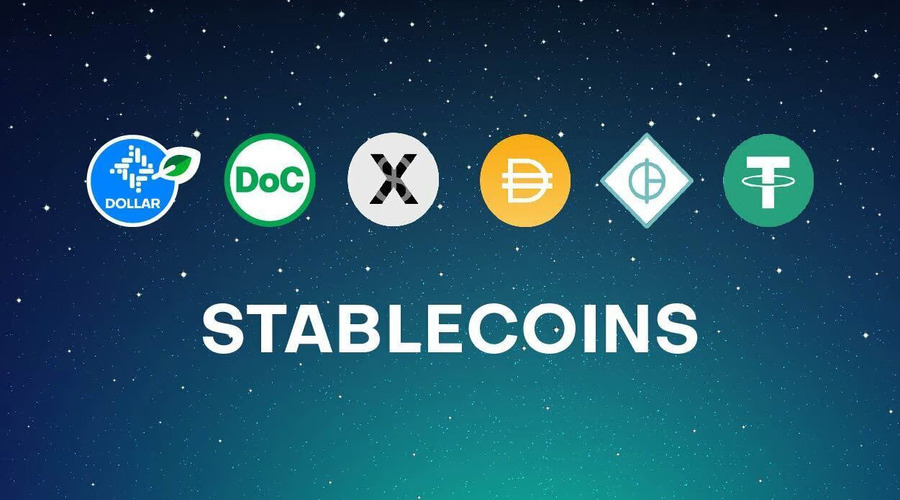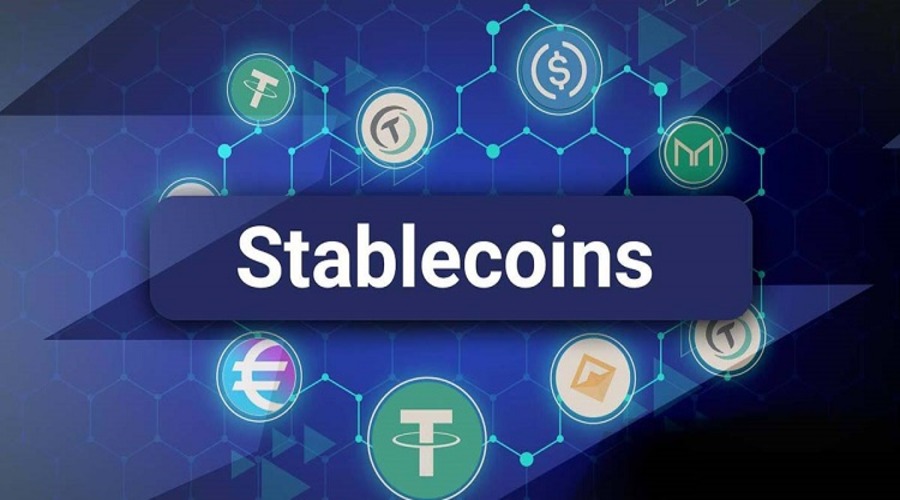If you’re involved in the world of cryptocurrency, you’ve likely come across stablecoins. Stablecoins are digital currencies that are designed to maintain a stable value, usually pegged to a fiat currency like the US dollar. They are increasingly popular among traders and investors due to their low volatility, which makes them less risky than other cryptocurrencies. However, it’s crucial to store and use stablecoins securely to avoid the risk of loss or theft. In this article, we’ll guide you through the best practices for storing and using stablecoins in a crypto wallet.
What are Stablecoins?
Stablecoins are a type of cryptocurrency that is pegged to a stable asset, like fiat currency, precious metals, or other cryptocurrencies. The goal of stablecoins is to provide the benefits of cryptocurrency while minimizing the volatility that often comes with it. Stablecoins are backed by reserves, which means that for every unit of stablecoin in circulation, there is an equal amount of the reserve asset held in a bank account or other secure location.
Advantages of Stablecoins in a Crypto Wallet
Stablecoins offer several advantages over other cryptocurrencies, including:
- Low volatility: Stablecoins are designed to maintain a stable value, which means they are less volatile than other cryptocurrencies.
- Faster transactions: Stablecoins can be transferred quickly and easily, just like other cryptocurrencies.
- Accessibility: Stablecoins are widely available and can be traded on many cryptocurrency exchanges.
Storing Stablecoins in a Crypto Wallet
When it comes to storing stablecoins, it’s crucial to use a secure crypto wallet. A crypto wallet is a software application that allows you to store, send, and receive cryptocurrencies securely. There are several types of crypto wallets available, including hardware wallets, software wallets, and web wallets.
Hardware Wallets
Hardware wallets are physical devices that store your private keys offline, providing an additional layer of security. They are the most secure option for storing cryptocurrencies and are recommended for long-term storage. Examples of hardware wallets that support stablecoins include Ledger, Trezor, and KeepKey.
Software Wallets
Software wallets are digital applications that allow you to store cryptocurrencies on your computer or mobile device. They are more convenient than hardware wallets but less secure since they are connected to the internet. Examples of software wallets that support stablecoins include Exodus, MyEtherWallet, and Atomic Wallet.
Web Wallets
Web wallets are online services that allow you to store cryptocurrencies in the cloud. They are the least secure option since they are connected to the internet and controlled by a third party. However, they are convenient and easy to use. Web wallets supporting stablecoins include Coinbase, Binance, and Gemini.
Using Stablecoins in a Crypto Wallet

Once you have stored stablecoins in your crypto wallet, you can use them for a variety of purposes, including trading, investing, and making purchases.
Trading Stablecoins
Stablecoins are often used for trading on cryptocurrency exchanges since they are less volatile than other cryptocurrencies. You can buy and sell stablecoins on most exchanges, including Binance, Kraken, and Bitfinex.
Investing in Stablecoins
Stablecoins can be a good investment since they offer a stable value. You can invest in stablecoins through cryptocurrency exchanges or by using decentralized finance (DeFi) platforms like Compound, Aave, and MakerDAO.
Using Stablecoins for Purchases
Stablecoins can be used to make purchases just like any other cryptocurrency. Some merchants accept stablecoins as payment, and you can also use stablecoins to buy other cryptocurrencies on exchanges.
Best Practices for Storing and Using Stablecoins in a Crypto Wallet
To ensure the security of your stablecoins, it’s important to follow these best practices:
- Use a secure crypto wallet: As mentioned earlier, it’s crucial to use a secure crypto wallet to store your stablecoins. Choose a wallet that offers strong security features like two-factor authentication, encryption, and backup options.
- Use a strong password: When creating a password for your crypto wallet, make sure it’s strong and unique. Don’t use the same password for multiple accounts, and avoid using easily guessable passwords like “123456” or “password.”
- Backup your wallet: Make sure to backup your crypto wallet regularly to avoid the risk of losing your stablecoins. You can backup your wallet by exporting your private keys or seed phrase to a secure location.
- Keep your wallet up-to-date: Keep your crypto wallet up-to-date by installing updates and security patches as they become available. This will help to ensure that your wallet remains secure and protected against potential threats.
Risks Associated with Storing and Using Stablecoins in a Crypto Wallet
While stablecoins offer several advantages over other cryptocurrencies, there are still risks associated with storing and using them. Some of the main risks include:
- Exchange risk: Stablecoins are often used to trade other cryptocurrencies on exchanges. However, if the exchange goes bankrupt or is hacked, you may lose your stablecoins.
- Counterparty risk: If the issuer of the stablecoin goes bankrupt or fails to maintain the required reserves, the stablecoin may lose its peg to the underlying asset, resulting in a loss of value.
- Security risk: If your crypto wallet is not properly secured, your stablecoins may be at risk of theft or hacking.
- Regulatory risk: The regulatory environment for stablecoins is still evolving, and there is a risk that regulators may impose restrictions or regulations that could impact their use and value.
To mitigate these risks, it’s important to choose a reputable stablecoin issuer, use a secure crypto wallet, and follow best practices for storing and using stablecoins.
Choosing the Right Stablecoin
There are many different stablecoins available, each with its own unique features and benefits. Some of the most popular stablecoins include Tether (USDT), USD Coin (USDC), Dai (DAI), and TrueUSD (TUSD). When choosing a stablecoin, consider factors like its stability, liquidity, and reputation.
Best Practices for Using Stablecoins in a Crypto Wallet
In addition to best practices for storing stablecoins, there are also best practices for using stablecoins. Here are some tips for using stablecoins securely:
- Verify the recipient’s address: Before sending stablecoins to another address, make sure to verify that the address is correct. Double-check the address to avoid sending your stablecoins to the wrong recipient.
- Use two-factor authentication: Many crypto wallets and exchanges offer two-factor authentication (2FA), which adds an extra layer of security to your account. Enable 2FA to reduce the risk of unauthorized access to your account.
- Don’t share your private keys or seed phrase: Your private keys or seed phrase are like the keys to your crypto wallet. Never share them with anyone or store them in an unsecured location.
- Be cautious with public Wi-Fi: When using public Wi-Fi networks, be cautious about accessing your crypto wallet or making transactions. Public Wi-Fi networks may be less secure and may put your crypto assets at risk.
- Keep track of your transactions: Keep a record of all your stablecoin transactions, including the date, amount, and recipient’s address. This can help you to detect any fraudulent activity and to keep track of your investments.
Stablecoin Alternatives
While stablecoins offer a stable and less volatile alternative to other cryptocurrencies, there are also alternatives to stablecoins. One popular alternative is gold-backed cryptocurrency, which is a type of cryptocurrency that is backed by physical gold. Gold-backed cryptocurrencies offer the stability of gold while also providing the benefits of cryptocurrency, such as fast and low-cost transactions.
Decentralized Stablecoins
Decentralized stablecoins are a type of stablecoin that is not controlled by a central authority, but rather operates on a decentralized blockchain network. These stablecoins offer several benefits over centralized stablecoins, including:
- Greater transparency: Decentralized stablecoins are transparent, meaning that anyone can see the transaction history and the reserves held in the smart contract.
- No counterparty risk: Decentralized stablecoins do not have a centralized issuer, meaning there is no counterparty risk associated with them.
- More resilient: Decentralized stablecoins are more resilient to market shocks since they operate on a decentralized network.
However, there are also some challenges associated with decentralized stablecoins, including the potential for liquidity issues and the need for a stable and decentralized pricing oracle.
Stablecoin Regulations
Regulations around stablecoins are still evolving, and there is no consensus yet on how they should be regulated. Some regulators see stablecoins as similar to traditional financial assets and have imposed regulations on them, while others view them as a form of cryptocurrency and have treated them similarly to other cryptocurrencies.
In the United States, stablecoins are regulated by several different agencies, including the Securities and Exchange Commission (SEC), the Commodity Futures Trading Commission (CFTC), and the Office of the Comptroller of the Currency (OCC). These agencies have taken different approaches to regulating stablecoins, with the SEC treating them as securities, the CFTC treating them as commodities, and the OCC allowing national banks to use stablecoins for payment activities.
Conclusion
Stablecoins offer a stable and less volatile alternative to other cryptocurrencies, making them an attractive option for traders and investors. By following best practices for storing and using stablecoins, you can ensure the safety and security of your crypto assets. Additionally, by exploring alternative cryptocurrencies and keeping an eye on new developments in the field, you can stay ahead of the curve and make the most of your crypto investments.
As regulations around stablecoins continue to evolve, it’s important to stay informed and be aware of the potential implications for stablecoin use and adoption. By staying up-to-date on regulatory developments and best practices for using stablecoins, you can maximize the benefits of this exciting new technology.
FAQs
- What are stablecoins backed by?
Stablecoins can be backed by various assets, including fiat currency, precious metals, or other cryptocurrencies. - What is the most secure way to store stablecoins?
Hardware wallets are the most secure way to store stablecoins since they store your private keys offline. - Can stablecoins be used for purchases?
Yes, stablecoins can be used to make purchases like any other cryptocurrency. - How do I back up my crypto wallet?
You can back up your crypto wallet by exporting your private keys or seed phrases to a secure location. - Are stablecoins more secure than other cryptocurrencies?
Stablecoins are generally considered more secure than other cryptocurrencies since they are designed to maintain a stable value, reducing the risk of volatility. However, storing and using them securely is still important to avoid the risk of loss or theft.





